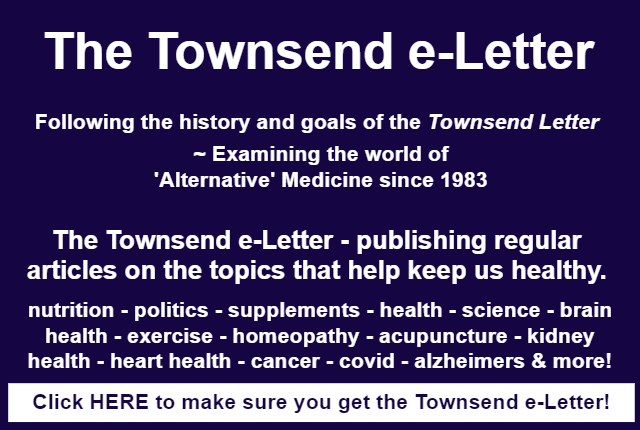Michelle Perro, MD
The Microbial Landscape During Pregnancy
Since the introduction of the term probiotics in 1965 by Lilly and Stillwell as “growth-promoting factors produced by microorganisms to the present explosion of interest and research on the microbiota,” the plethora of information and products available can be overwhelming. Additionally, as new studies lend further information regarding the microbiome and its function as an organ, how to best support our mutual cohabitants especially for babies can be daunting.1
A quick review – the gut microbiome provides a broad range of functions including the following:
- The digestion of particles from food into nutritional products,
- Detoxification of xenobiotics,
- Support of intestinal cell lining integrity,
- And immune system modulation.
Over the past decade, our knowledge of microbial function has become more fine-tuned. There is now a greater understanding of the gut microbiome in relation to various clinical scenarios such as pregnancy. The various conditions that can occur during pregnancy such as metabolic syndrome, diabetes, and intestinal permeability can shift the maternal inflammatory state, which can negatively affect the fetus.
Inflammatory states vary during pregnancy from higher inflammation at implantation and in labor, to lower levels during mid-pregnancy. The microbiota can affect these states; for example, microbes—ascending from the vagina or hematogenous spread of microbes from a leaky gut—have been found in amniotic fluid in women with preterm labor.2
The dramatic hormonal shifts that occur during pregnancy from estrogen and progesterone also impact the gut microbial metabolism as well as virulence. This has been shown via susceptibility to Listeria monocytogenes infections, which can lead to prematurity and stillbirth.3
The microbial diversity in early pregnancy compares to non-pregnant women. As pregnancy develops, 70% of women develop a more inflammatory microbiota as well as a rise in proinflammatory cytokines.4 Conventionally, this change would be consistent with a diseased state. However, in the framework of pregnancy, these changes improve energy storage in fat, creating a better milieu for fetal growth as well as lactation.5
In addition to diet and lifestyle modifications that support a healthy microbiome, supplementation with Lactobacillus rhamnosus GG (a strain of L. rhamnosus isolated in 1983) and acidophilus have been shown to improve glucose metabolism, reduce high blood pressure (and the incidence of preeclampsia) as well as offer protection against heavy metal toxicity.5
The effects of a robust diet with fiber-enriched foods, fermented products, and probiotic supplements focused on the lactobacilli strains mentioned above cannot be more strongly encouraged to fortify mom and baby.
Do Breastfed Babies Need Probiotics?
The concept of a baby biota is not new. In 1913, Dr. Logan, a Scottish pathologist, reported that the fecal smears of breastfed infants were nearly a monoculture of Bacillus bifidus (now termed Bifidobacterium). Formula-fed infants were noted to have a microbial mix with less diversity and fewer Bifidobacterium comparable to breastfed babies today.6 This loss of bifido species produces a subsequent rise in fecal pH and a subsequent loss of protection from pathogens.
In the consideration of whether breastfed babies need probiotics, there are many areas to ponder, including the overall health of the parents, in particular Mom (including maternal stressors):
- Mom’s diet: Organic? Fermented foods? Veggies?
- Type of delivery (which determines infant microbial inheritance)
- Disruptions in labor/delivery that required medical interventions.
- Household pets
- Siblings
- History of health challenges/GI issues in other children
- Antibiotic administration in mom/infant
In an ideal environment, a breastfed baby should not require additional probiotics since breast milk provides a variety of beneficial microbes.7 However, if Mom was on probiotics prior to conception/delivery and found that probiotics enhanced her own health, common sense would dictate that she should continue the regime that brought her gut homeostasis and happiness. Another added benefit is that L. rhamnosus has been shown to reduce postpartum depression and anxiety in a double-blinded, placebo-controlled trial.8
Needless to say, there are life plans and then life happens. What is the recommendation when situations are not ideal? Perhaps, antibiotics were prescribed, or mom/infant developed health challenges requiring interventions that might interfere with a healthy microbiome. In those instances, breastfed babies can be supplemented with a probiotic that includes a specific strain of Bifidobacterium longum subspecies infantis.
A recently published study showed that fecal B. infantis can last even after the cessation of the supplement for up to one year.9 These microbes need to be fed, and human milk oligosaccharides (HMOs) make the perfect lunch.
As noted, human milk is not sterile and contains a variety of complex bacterial communities specific to each lactating mom. These inhabitants not only impact baby’s health but may also modulate mammary gland epithelial cells and local immune responses. This can affect common breastfeeding issues, such as mastitis. Babies are not mini-adults, and their microbiota are specific and adaptable to their own needs.
Clinically speaking, I focus on predominantly Bifido species, as mentioned above, and aim for fewer colonies (approximately 1 billion cfu) than what is prescribed for older children. With any clinical intervention, feeding, pooping, activity level, and sleep patterns are carefully monitored. The ultimate goal is to enhance and remodel the biochemical and immunological environment of the infant gut to nourish and protect the baby.
As we further develop our understanding of this complex inner world, the introduction of other foods and solids in regard to supporting a healthy gut microbiota and immune system function during childhood will also need to be taken into account.
Do Formula-Fed Babies Need Probiotics?
Although toddlers consume live bacteria, particularly in the form of yogurt, the idea of supplementing formula with probiotics was not considered until approximately 2004.10 Some of the first studies introduced Bifidobacterium lactis and Streptococcus thermophilus to infant formulas and found that there was a reduction in colic as well as a lower frequency of antibiotic usage.10 Several infant formulas now contain B. lactis and Lactobacillus GG.
Few studies have examined the effects of adding prebiotic oligosaccharides in infant formulas. However, the prevailing research leans towards the addition of prebiotics, which have a bifidogenic effect. Infant formulas that contain either galacto- or fructooligosaccharides (GOS or FOS) are commercially available. The American Academy of Pediatrics (AAP) published an excellent online review of probiotics and prebiotics in children in 2010. An updated recommendation would be valuable for practitioners.
The oligosaccharides in formula are not equivalent to HMOs since gal- and fructose carbohydrates do not naturally occur in human milk. Despite their structural differences, the ingestion of GOS and FOS influences the microbiota in infant fecal smears and provides health benefits such as the reduction of atopic disorders, infection, and the potential for the development of subsequent autoimmunity later in life.
There have been so many clinic visits where one of the first questions from Mom is which infant formula do I recommend. I present my general guidelines, which may need to be individualized based on the infant, access, finances, etc. My first priority regarding formula recommendation is an organic infant formula. The top selling organic brands may contain Lactobacillus fermentum, Lactobacillus reuteri, and Bifidobacterium lactis. Some formula companies are now selling probiotic powders to add to their formulas. A curious finding is that some of the popular organic formulas do not contain probiotics, and only a few contain prebiotics.
Based on research available to date, I do recommend the addition of probiotics, especially if they haven’t been added or are limited in the baby’s formula. I focus on adding B. infantis and B. lactis as well as various other strains of Lactobacilli such as L. reuteri and L. rhamnosus. Based on my own clinical experience, I am not as keen on adding Streptococcus thermophilus, although it potentially represents a part of the intestinal microbiota; I prefer to wait until the baby matures.11
One of my biggest concerns regarding organic formula is the cost; for some formulas, buying gold might be cheaper. There are excellent recipes offered by the Weston A. Price Foundation.12 The formulas are doable; but with busy families and several young children in the home, homemade formulas can be challenging to prepare.
In sum, my probiotic prescriptions include mostly bifido species and a few lactobacillispecies. Since the goal is trying to mimic breastmilk, I recommend dosing daily, mixing the probiotics directly into prebiotic containing formulas. For babies with thrush, probiotics have been shown to be extremely helpful for the infant and Mom, mindful of the fact that the yeast can be ping-ponged back and forth between Mom and nursing baby.
However, first and foremost, I advise that the literature on the topic of probiotics, particularly in infancy, is rapidly changing and frequent check-ins on infant recommendations are required.
A Heartfelt Thank You to the Townsend Letter
As a contributor and avid reader of the Townsend Letter, I’m overwhelmed with sadness to see this cornerstone publication of not only my library, but my practice retire from circulation. There has not been another journal to even remotely approach the quality and breath of materials published each month. The additional benefit of camaraderie from collaborating with like-minded practitioners and truth-seekers will be missed.
Thank you for allowing me to share my pedi-world with the TL readers, and you will be missed!
References
- Lily DM, Stillwell RH. Probiotics: Growth-Promoting Factors Produced by Microorganisms. Science; 12 Feb 1965;147 (3659): 747-748. doi: 10.1126/science.147.3659.7
- Edwards SM, et al. The Maternal Gut Microbiome during Pregnancy. MCN, The American Journal of Maternal/Child Nursing: November/December 2017;42 (6):310317. doi: 10.1097/NMC.0000000000000372
- Mayer EA et al. Brain-gut microbiome interactions and functional bowel disorders; Gastroenterology; 2014 May;146(6):1500-12. doi: 10.1053/j.gastro.2014.02.037. Epub 2014 Feb 28
- Santacruz A, et al. Gut microbiota composition is associated with body weight, weight gain and biochemical parameters in pregnant women. Br J Nutr; 2010 Jul;104(1):83-92. doi: 10.1017/S0007114510000176. Epub 2010 Mar 8
- Chassaing B and Gewirtz A. Gut microbiota, low-grade inflammation, and metabolic syndrome. Toxicol Pathol; 2014 Jan;42(1):49-53. doi: 10.1177/0192623313508481. Epub 2013 Nov 27
- Logan W R. The Intestinal Flora of Infants and Young Children; Journal of Pathology and Bacteriology, Vol. XVIII, Issue 1; First published: 1913. https://doi.org/10.1002/path.1700180154
- Lyons KE, et al. Breast Milk, a source of Beneficial Microbes and Associated Benefits for Infant Health. Nutrients. 2020 Apr; 12(4): 1039
- Slykerman R F, et al. Effect of Lactobacillus rhamnosus HN001 in Pregnancy on Postpartum Symptoms of Depression and Anxiety: A Randomised Double-blind Placebo-controlled Trial. EBioMedicine; 2017 Oct;24:159-165. doi: 10.1016/j.ebiom.2017.09.013. Epub 2017 Sep 14
- Frese S A, et al. Persistence of Supplemented Bifidobacterium longum subsp. infantis EVC001 in Breastfed Infants. ASM Journals,mSphere, Vol.2, No. 6; doi: https://doi.org/10.1128/mSphere.00501-17
- Saavedra J M, et al. Long-term consumption of infant formulas containing live probiotic bacteria; tolerance and safety. The American Journal of Clinical Nutrition. February 2004;79 (2): 261–267, https://doi.org/10.1093/ajcn/79.2.261
- Martinovic A, et al. Streptococcus thermophilus: To Survive, or Not to Survive the Gastrointestinal Tract, That Is the Question!; Nutrients. 2020 Aug; 12(8): 2175.
- https://www.westonaprice.org/health-topics/childrens-health/formula-homemade-baby-formula/#gsc.tab=0 (works with DuckDuckGo search engine)
About the Author
Michelle Perro, MD, DHom, is a veteran pediatrician with four decades of experience in acute and integrative medicine. More than fifteen years ago, Dr. Perro transformed her clinical practice to include GMO and pesticide advocacy. She has worked as both Emergency Room Director and Attending Physician from New York’s Metropolitan Hospital/New York Medical College to UCSF Benioff Children’s Hospital, Oakland, CA. Dr. Perro has managed her own business, Down to Earth Pediatrics, creating a new field of integrative urgent care medicine.
Dr. Perro has co-authored the highly acclaimed book, What’s Making our Children Sick? and is Executive Director of a non-profit scientific-based website, GMOScience. She has authored many publications and has lectured nationally and internationally on regenerative food/soil, environmental health, and justice issues focused on children. She plans to have her second book released summer 2023.


